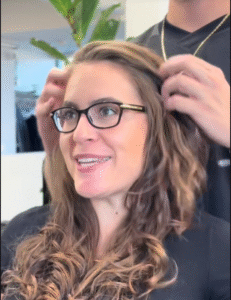Curly hair has always been more than just hair—it is personality, identity, and expression woven into each strand. Spirals and coils have a way of moving that captures light and attention, yet for decades, they were dismissed as unruly or unprofessional. Generations grew up hearing that straight hair was the gold standard, leaving countless people fighting against their natural texture. Straightening irons hissed every morning, chemical relaxers burned scalps, and styling products promised control while delivering only damage. What should have been a crown of individuality was treated like something to hide.
The transformation happening today represents more than a change in beauty routines. It reflects a cultural and emotional shift toward self-love and authenticity. Instead of seeing curls as problems to be fixed, people are learning to embrace them as part of who they are. The curly hair transformation is about rejecting old standards and rediscovering confidence.
Understanding curls begins with their unique structure. Because each strand bends and twists, natural oils from the scalp struggle to travel evenly. This is why curly hair is often drier and more prone to frizz or breakage than straight hair. In the past, harsh shampoos only made matters worse, stripping away what little moisture remained. Now, the focus is on nourishment. Sulfate-free cleansers gently cleanse without over-drying, conditioners restore softness, and deep treatments repair damage. Oils such as coconut, argan, and jojoba are being used to seal hydration, giving curls bounce and resilience.
Styling has also changed from a battle into a celebration. Techniques like finger-coiling define spirals, twist-outs highlight natural curl patterns, and plopping helps reduce frizz while drying. Diffusers on low heat encourage volume while protecting delicate strands. Modern creams, mousses, and gels designed specifically for curls allow definition without stiffness, letting hair move naturally. Protective styles, including braids and buns, offer versatility while allowing curls to rest and remain strong. Instead of suppressing texture, these approaches showcase it.
Social and cultural changes have amplified this movement. Social media platforms are filled with tutorials, transformation stories, and communities where curly-haired people share tips and support. Before-and-after photos don’t just show healthier hair—they reveal brighter smiles and new confidence. Representation in film, fashion, and advertising has grown as well. Where curls were once hidden or straightened for the spotlight, they are now proudly displayed on red carpets and magazine covers. This visibility matters, especially for young people, who are learning early that their hair deserves to be celebrated.
The emotional impact of embracing curls is profound. People who once dreaded rain or humidity now walk confidently with their hair in its natural state. What used to be seen as a weakness has become a strength, a statement of individuality. Parents are teaching their children to love their curls from the start, ensuring that cycles of insecurity are broken and replaced with pride. For many, this journey has been about more than beauty—it has been about healing, acceptance, and the courage to be authentic.
The curly hair transformation shows that beauty is not about conforming to a single standard. It is about embracing diversity, celebrating uniqueness, and finding strength in authenticity. Every spiral and wave tells a story of resilience and identity.
When worn proudly, curls are more than hair. They are crowns—symbols of confidence, culture, and individuality that inspire people everywhere to embrace who they are without apology.


